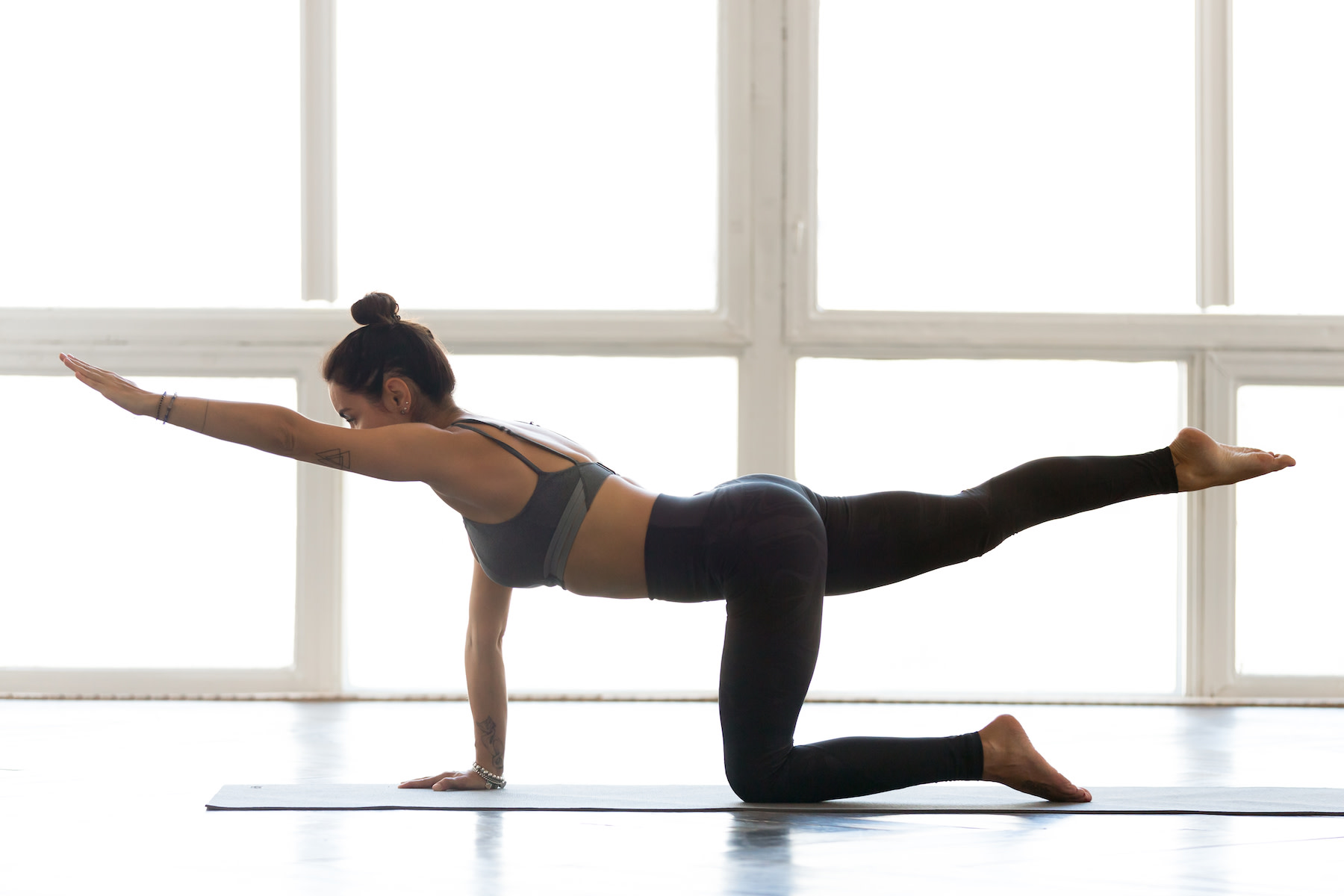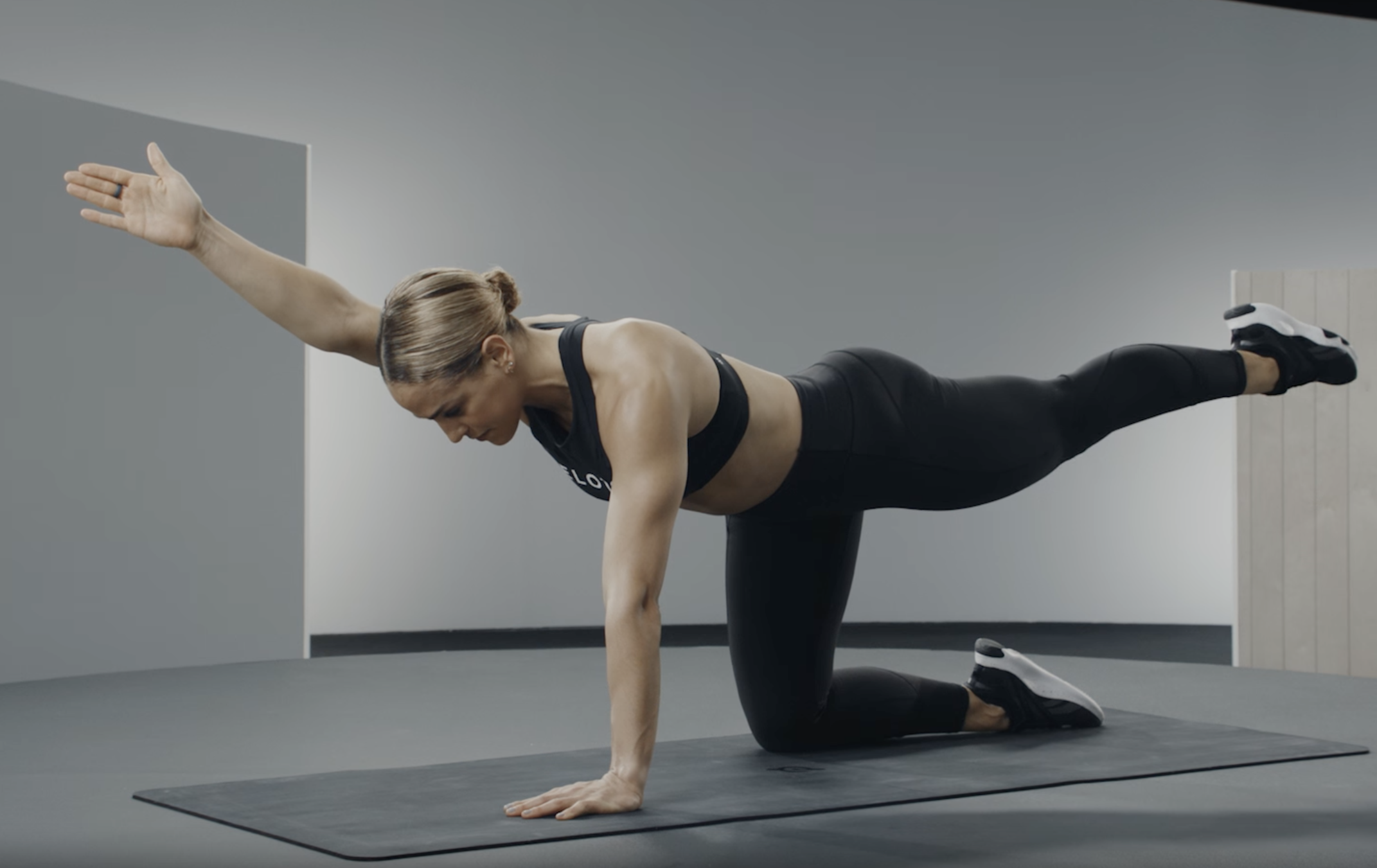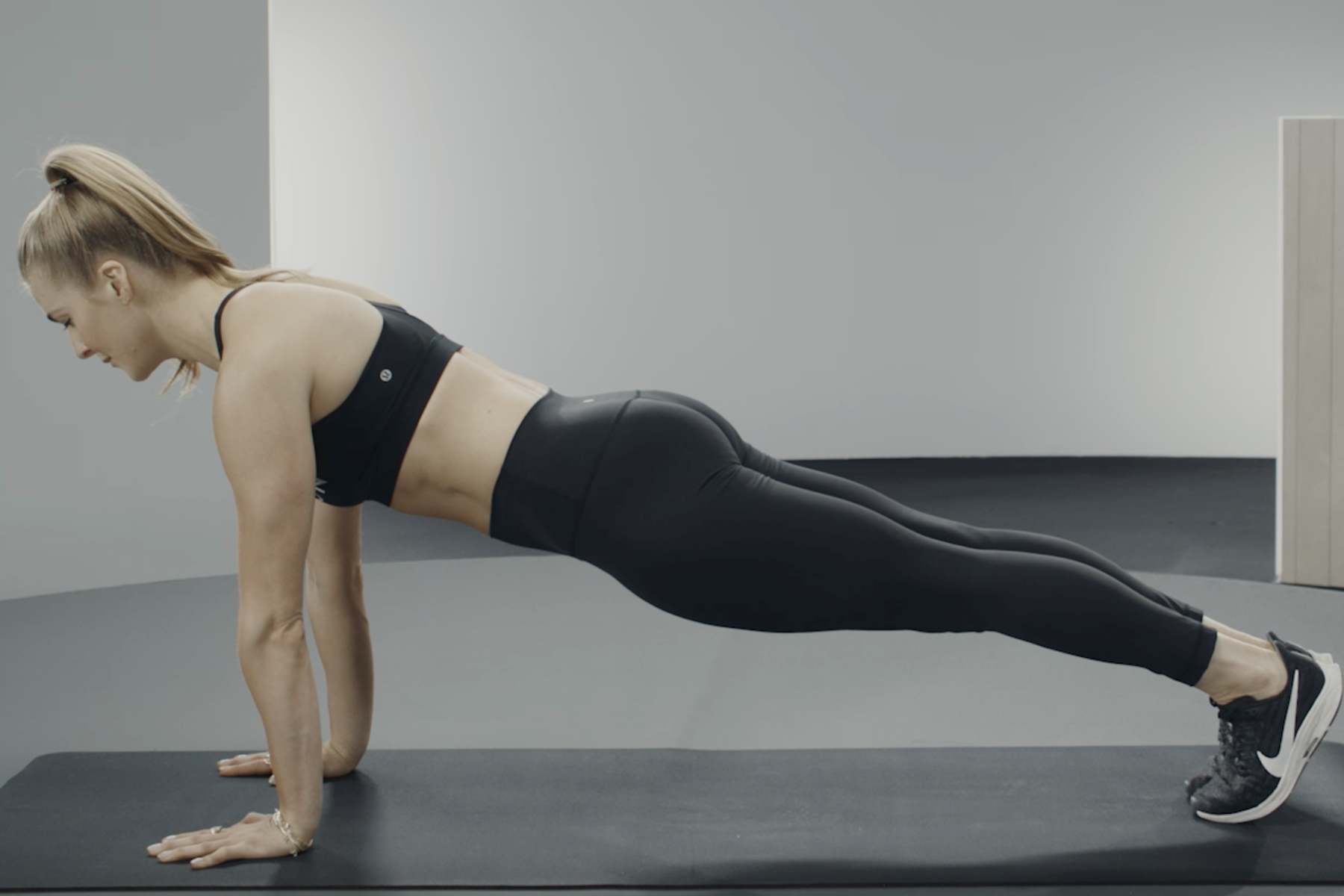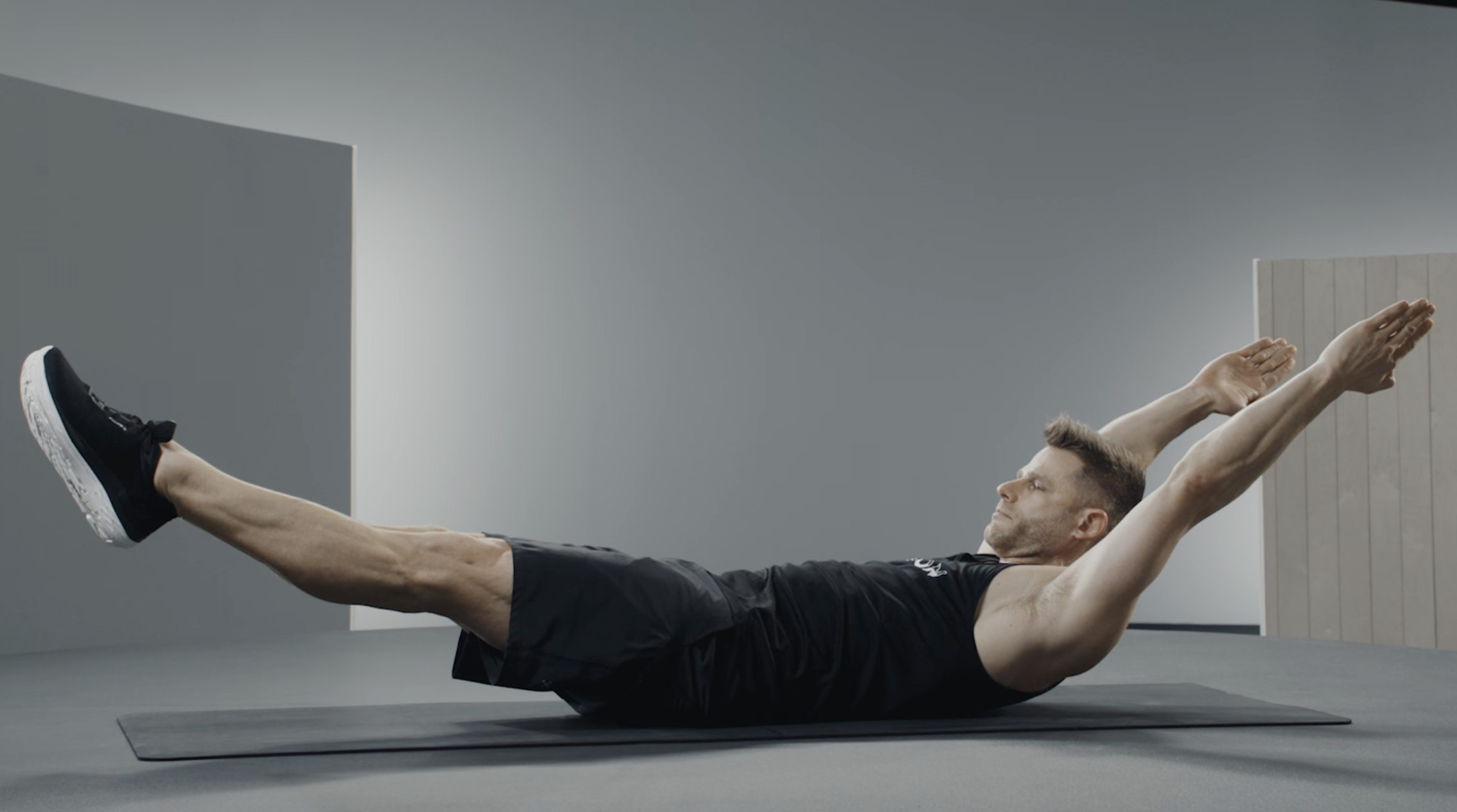
fizkes/iStock / Getty Images Plus via Getty Images
7 Exercises to Target Those Deep, Deep Core Muscles
Because they're more important than you may think.
By Alyssa Sparacino•
What Exactly Is Your Deep Core?
The Benefits of Deep Core Exercises
7 Deep Core Exercises to Try
How Often Should You Do Deep Core Exercises?
A workout is about more than just breaking a sweat—so much of what makes fitness special is how it helps you train for life. Oftentimes, that means paying less attention to the muscles you can flex in the mirror and focusing more on those that support your everyday activities.
Discover more ways to reach your goals with Peloton
Your deep core definitely fits that bill. These muscles aren’t what give you defined abs, but they’re responsible for avoiding low back pain, keeping your posture upright, and, yes, helping to build a strong core. Here’s why training this area of your body is so essential.
What Exactly Is Your Deep Core?
Each muscle in your deep core serves a unique purpose, says Heather Milton, senior exercise physiologist and certified strength and conditioning specialist at NYU Langone’s Sports Performance Center. They consist of the:
Transverse abdominis: the deepest of your ab muscles
Multifidus: the muscle on your back that helps stabilize your spine
Diaphragm: the large, dome-shaped muscle that sits below your lungs and aids in breathing
Pelvic floor: the pubococcygeus, iliococcygeus, coccygeus, and puborectalis muscles, which support your bladder, uterus (in females), small intestine, and rectum
Your deep core is part of your total core, which also includes your obliques on the sides of your body, rectus abdominis at the front of your torso, and glutes. Exercises that focus on stability and anti-rotation, such as a plank or renegade row, will engage these muscles. (Crunch variations are more likely to recruit the muscles at the front of your abs.)
These muscles have a ton of functional benefits beyond keeping your body stable during exercise, including improving how your body moves through everyday life, Milton adds.
Is It Even Possible to Target Your Deep Core?
Yes, you can target your deep core, but it takes some practice to “find it” or feel the connection to these specific muscles.
Using your warm-up as a chance to engage your deep core is a great way to prepare yourself for any kind of workout, Milton says. Isolation exercises, such as a hollow body hold or a dead bug, are great for tapping into your transverse abdominis, multifidus, and diaphragm, she adds.
If you’re struggling to connect with your deep core during workouts, consider working with a physical therapist to target your pelvic floor. Kegals and breathing exercises may also help, Milton adds.
The Benefits of Deep Core Exercises
The reasons to prioritize deep core work run, well, deep. They include improved posture, a reduced risk of lower back pain, enhanced athletic performance, and better overall stability and balance, says Peloton instructor Jermaine Johnson.
Deep core exercises keep your spine in alignment and help ensure you have balanced muscle engagement throughout your body, Milton says.
Deep core workouts also “contribute to better breathing control and aerobic capacity, reduced injury risk during activities, and better bladder control,” she says.
While everyone can benefit from deep core exercises, runners, cyclists, and lifters can reap some of the biggest perks, Jermaine says. “Runners and cyclists rely on core stability for efficient movement, while lifters require a strong core for heavy lifting and injury prevention during compound movements.”
7 Deep Core Exercises to Try
Whether you use deep core exercises as a warm-up or compile them into a separate workout, these moves will target those invisible, inner ab muscles.

1. Dead Bug
Begin by lying on your back with your head down and your knees in a tabletop position. Reach your arms straight up to the ceiling, keeping them in line with your shoulders.
On an inhale, lower your right arm back toward the floor above your head as you extend your left leg straight away from your midline toward the floor in front of you. Your arm and leg should hover above the ground.
On an exhale, simultaneously draw your arm and leg back up to the starting position. Repeat on the opposite side.
Muscles worked: Deep core, obliques, hip flexors, shoulders, back

2. Bird Dog
Start on all fours. Position your knees below your hips and your hands below your shoulders. Maintain a neutral spine. On an exhale, engage your deep core.
Extend your right arm forward while lifting your left leg behind you. Your arm and leg should be in a straight line with your torso. Avoid arching your back.
Pause. Lower your arm and leg back to the starting position. Repeat on the opposite side.
Muscles worked: Deep core, obliques, hamstrings
3. Palloff Press
The Palloff press can be done with a cable machine, but you can also mimic the same movement with a long-looped resistance band tied to something sturdy.
Position the cable or resistance band so that it’s roughly at chest height. Stand sideways so the cable or band is at your side.
Grab the cable’s handle or the opposite end of the band with both hands. There should be tension on the band.
On an exhale, brace your deep core and extend both hands directly out in front of you.
Pause. Slowly return back to the starting position, always keeping tension on the cable or band. Repeat.
Muscles worked: Deep core, obliques
4. Press-Down
Stand tall. Face a cable machine with a rope attachment or a large-looped resistance band attached to something sturdy.
Grab the ends of the rope attachment or loop band. Press both arms straight down to your hips on an exhale. Maintain a slight posterior pelvic tilt—but avoid crunching your torso down.
Return to the starting position. Repeat.
Muscles worked: Deep core, triceps, lats, chest/pecs

5. Plank Variations
To recruit those sleeping muscles in your deep core, turn to a plank variation. Try a high plank on your palms with your knees up or down, a side plank with your knees or feet stacked, or a forearm plank with or without hip dips. To up the intensity, try an elevator plank: Begin in a high plank and come down to your forearms before reversing the movement back up to a high plank.
Muscles worked: Deep core, shoulders, glutes, obliques, adductors
6. Stability Ball Rollouts
Start in a forearm plank position. Rest your forearms on the top of a large stability ball (aka a Swiss ball or an exercise ball).
Maintain a strong and stable plank position as you use your forearms to roll the ball a few inches forward.
Pause here, then slowly roll back to the starting position. Only roll out as far as you can while maintaining good form. Avoid rolling further back than your starting position.
Muscles worked: Deep core, obliques, lats, traps, lower back stabilizers, shoulders

7. Hollow Body Hold
Begin by lying flat on your back with your legs in a tabletop position and your pelvis slightly tucked up so that your lower back presses into the mat.
Extend both of your legs long. Aim to position them at a 45-degree angle. You may need to raise them slightly up in order to maintain the connection between your back and the ground.
Raise your arms overhead. Position them slightly behind you so that your biceps are roughly in line with your ears. Hold here for up to 30 seconds.
Muscles worked: Deep core, hip flexors, quads, traps
How Often Should You Do Deep Core Exercises?
You want to go into any core workout feeling confident in your ability to “find” and feel these deep core muscles at work. However, it’s not uncommon for this mind-body connection to take some time and practice, Milton says. “Many times, superficial muscles tend to take over when trying to learn how to activate these deeper core muscles,” she says.
Here, Milton offers a few tips to keep in mind as you’re building that deep core connection:
Slow down. Deep core exercises are not meant to be done at a high intensity. They should be slow and controlled.
Visualize your muscles. Think about the muscles you want to activate. Mentally picture them contracting, or find a visual diagram of the muscles to understand where they are in relationship to other muscles.
Focus on your breathing. Proper breathing can change everything when it comes to your workouts. For example, exhale as you contract your core muscles; inhale as you release.
Once you’re feeling attuned to your deep core, you can weave these exercises into your fitness schedule as often as you’d like. “Aim to include deep core work two to three times per week alongside your regular workout routine,” Jermaine says. “Make it a part of your routine by scheduling specific days for core-focused exercises and gradually increasing intensity and difficulty over time.”

Peloton App
Access thousands of classes with no equipment needed.
This content is for informational and educational purposes only and does not constitute individualized advice. It is not intended to replace professional medical evaluation, diagnosis, or treatment. Seek the advice of your physician for questions you may have regarding your health or a medical condition. If you are having a medical emergency, call your physician or 911 immediately.
Build full-body strength
Enter your email to get articles, instructor tips, and updates from Peloton sent to your inbox.
By providing your email address, you agree to receive marketing communications from Peloton.
For more about how we use your information, see our Privacy Policy.













